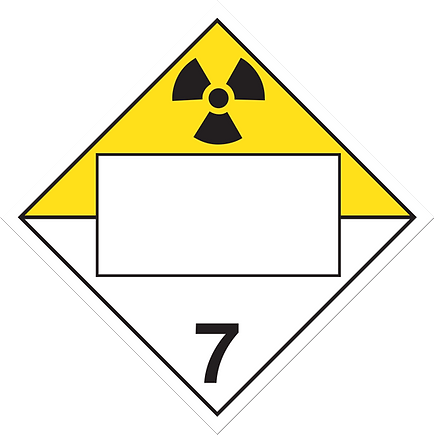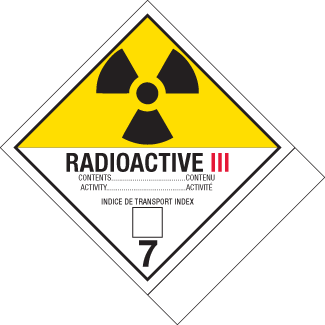Transporting radioactive materials presents some of the most complex challenges in dangerous goods haulage. As a driver trainer with years of experience preparing drivers for Class 7 transport, I’ve seen firsthand how this specialised field demands exceptional attention to detail and comprehensive understanding.
Understanding Radiation Risks

The invisible nature of radiation makes it particularly challenging for drivers to manage. Unlike other dangerous goods where hazards can often be seen, smelt, or heard, radiation requires careful monitoring through specialised equipment. Drivers must understand three main types of radiation—alpha, beta, and gamma—each requiring different protective measures. The concept of half-life also adds complexity, as radioactive materials continue to decay during transport.
Packaging and Containment

The packaging requirements for radioactive materials are among the most stringent in dangerous goods transport. Depending on the material’s activity level, packages range from industrial packages to Type A, Type B, and Type C containers. Each package must display its category—I-WHITE, II-YELLOW, or III-YELLOW—along with the transport index, which helps drivers maintain safe distances and proper load arrangements.
Vehicle Requirements and Documentation
Vehicles carrying radioactive materials require specific modifications and equipment. Beyond the standard dangerous goods requirements, drivers must understand both transport and criticality safety indexes, which determine maximum load limits. Documentation is particularly detailed, requiring precise information about radiation levels and specific handling instructions.
Emergency Response Challenges
Perhaps the most daunting aspect is emergency response. If an incident occurs, drivers must follow strictly defined procedures while potentially dealing with invisible contamination risks. The UK’s National Arrangements for Incidents involving Radioactivity (NAIR) scheme provides specialist support, but drivers remain the first line of response. They must secure the area, prevent contamination spread, and coordinate with emergency services without causing public panic.
Training and Qualification Requirements
The training requirements reflect the complexity of the task. Drivers must complete both the core ADR training and specific Class 7 modules, totalling at least 17 teaching units for initial qualification. This includes practical exercises in emergency response and package handling. Regular radiation dose monitoring and record-keeping add another layer of responsibility.
Environmental and Public Perception
Transporting radioactive materials often brings additional challenges related to public perception. Drivers must be prepared to handle increased scrutiny and sometimes face concerned residents along transport routes. This requires professional composure and a clear understanding of safety protocols to maintain public confidence.
The transport of radioactive materials represents one of the most regulated and carefully monitored sectors of dangerous goods transport. While the challenges are significant, the robust training and safety systems in place ensure that these vital materials can be transported safely across the UK. Success in this field requires not just technical knowledge but also a commitment to maintaining the highest safety standards at all times.
The role demands constant vigilance, thorough understanding of radiation protection principles, and the ability to respond calmly and effectively in emergencies. For drivers willing to take on these challenges, it offers a specialised career path with significant responsibility and the satisfaction of knowing they’re maintaining safety in a critical sector of dangerous goods transport.
